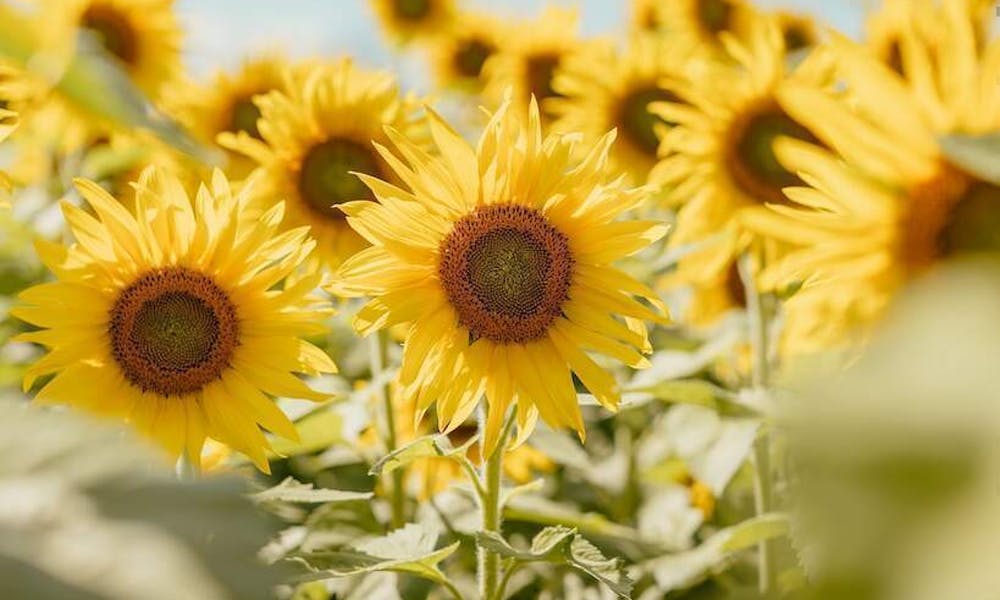MENU
Sunflower Life Cycle: From Seed to Blossom

Sunflowers, with their vibrant yellow petals and towering stems, are not only a beautiful addition to gardens but also a fascinating subject of study due to their intriguing life cycle. In this article, we will delve into the captivating journey of a sunflower from a tiny seed to a glorious blossom. So, let’s explore the stages of the sunflower life cycle and uncover the marvels of nature at work.
Introduction
The sunflower, scientifically known as Helianthus annuus, is a quintessential symbol of summer and warmth. Its life cycle encompasses several distinct stages that showcase nature’s ingenious ways of adapting and thriving.
The Seed Stage
Germination: A Seed’s Awakening
At the heart of every sunflower’s life is a tiny seed, a repository of potential waiting to unfurl. When planted in moist soil, the seed absorbs water, initiating the process of germination. Within days, a delicate root emerges, anchoring the future sunflower.
Cotyledon Unfolding: Embarking on Growth
As the root takes hold, the cotyledons, or seed leaves, begin to emerge. These initial leaves play a vital role in providing nourishment to the growing seedling until it can establish a connection with sunlight and water.
The Seedling Stage
True Leaves Development: Harnessing Sun’s Energy
With the cotyledons feeding the young plant, the first set of true leaves emerges. These leaves enable the sunflower to begin photosynthesis, converting sunlight into energy for further growth.
Establishing Roots: Nourishment and Stability
Simultaneously, the root system expands, drawing nutrients and water from the soil. This phase is crucial for anchoring the plant and sustaining its development.
The Vegetative Stage
Stem and Leaf Growth: Reaching for the Sky
During the vegetative stage, the sunflower experiences rapid growth. The stem elongates, and more leaves form, each positioned strategically to capture the maximum sunlight.
Branching Out: Creating More Opportunities for Energy
As the sunflower continues to grow taller, lateral branches emerge. This branching pattern enhances the plant’s capacity to produce energy, which is stored for the upcoming reproductive phase.
The Budding Stage
Formation of Flower Buds: Prelude to Bloom
The transition from vegetative to reproductive stage is marked by the appearance of small, tightly packed flower buds. These buds hold the promise of the sunflower’s iconic bloom.
Floral Initiation: Nature’s Artistic Process
As the buds develop, intricate structures form within. Petals, sepals, and reproductive organs take shape, all orchestrated by nature’s precise mechanisms.
The Blooming Stage
Unveiling the Petals: Sunflower’s Golden Crown
At last, the sunflower reveals its radiant petals to the world. The large yellow disc florets are surrounded by vibrant petals, attracting pollinators with their vivid hues and nectar.
Reproduction: Pollination and Seed Production
During bloom, the sunflower welcomes a variety of pollinators, from bees to butterflies. Pollination leads to the fertilization of the flower’s ovules, eventually resulting in the production of seeds.
The Maturation Stage
Seed Ripening: Journey to New Beginnings
As the petals fade, the seeds within the flower head start to mature. The flower head bows slightly, a sign that the seeds are approaching full ripeness.
Drying and Harvesting: Collecting the Fruits of Labor
The sunflower’s lifecycle culminates as the seeds dry and harden. This signals the optimal time for harvesting. Once harvested, the seeds can be used for various purposes, from planting new sunflowers to enjoying as nutritious snacks.
Conclusion
The sunflower’s life cycle is a testament to the marvels of nature’s design. From the humble beginnings of a seed to the grandeur of a fully bloomed flower, each stage serves a purpose in the plant’s journey. The next time you gaze upon a sunflower, you’ll have a deeper appreciation for the intricate process that brought it to life.
FAQs
- How long does it take for a sunflower to bloom? The blooming stage typically occurs around 70 to 90 days after germination, depending on factors like weather and care.
- Can sunflowers grow in different types of soil? Sunflowers are adaptable and can grow in various soil types, but they thrive in well-draining soil with good sunlight exposure.
- Are there sunflower varieties with different colored petals? Yes, there are sunflower cultivars with red, orange, and even bi-colored petals, adding to the charm of these plants.
- What is the significance of sunflowers in culture and history? Sunflowers hold cultural and historical importance across various civilizations, symbolizing happiness, longevity, and a strong connection to the sun.
- How can I harvest and store sunflower seeds for consumption? To harvest sunflower seeds for consumption, allow the flower head to dry on the plant. Once dry, gently rub the seeds off the head and store them in an airtight container in a cool, dry place.

